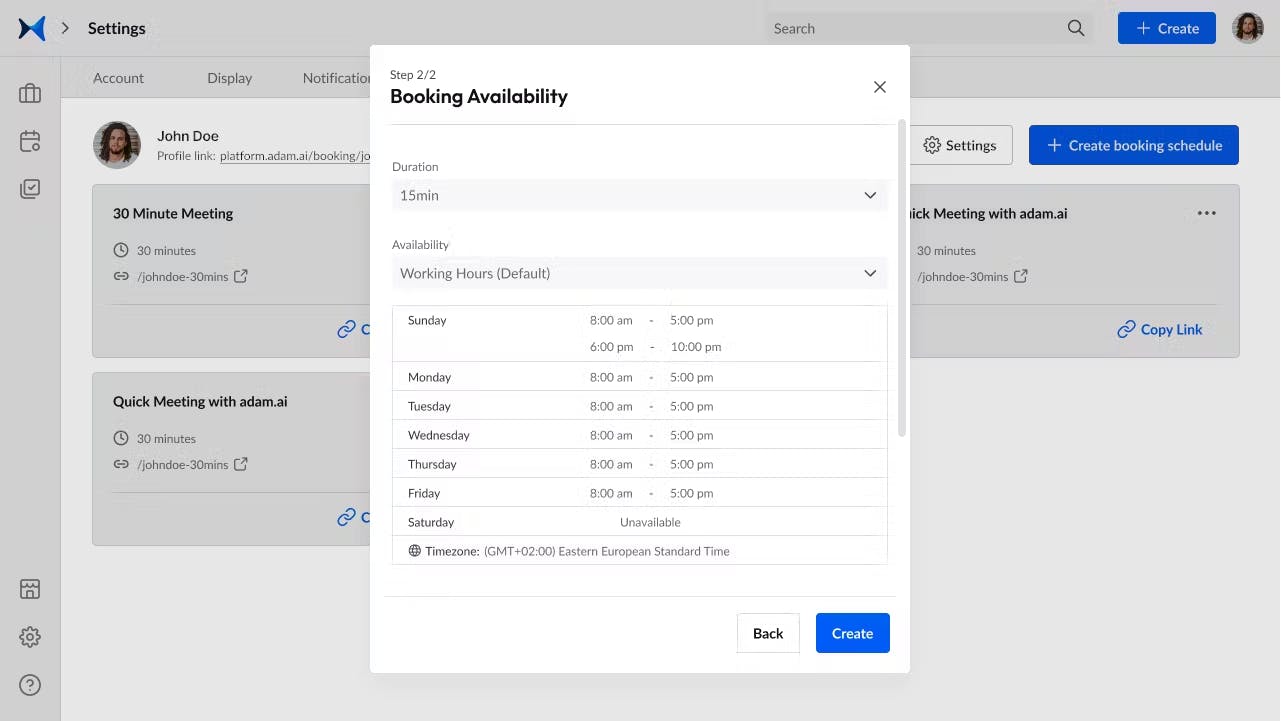Published January 10, 2024
-
12 mins read
CEO vs. Owner in Business Leadership: Different or One and the Same?

Shaimaa Badawi

In business leadership, the debate of CEO vs. owner remains a topic of significant interest. This article tackles the unique roles, responsibilities, and necessary skill sets of CEOs and business owners.
We explore how each position contributes to the success and direction of a company, highlighting the differences and similarities in their approaches to leadership and decision-making.
Read on to find out which essential tool that CEOs and owners need to capture, manage, and share knowledge in meetings to run business efficiently.
What is a CEO?
A Chief Executive Officer (CEO) is the highest-ranking executive in a company, responsible for overall strategic planning, decision-making, and leadership. Their role encompasses setting long-term goals, guiding the company's direction, and ensuring financial growth.
As a key communicator, the CEO liaises between the board of directors and company operations, often also representing the company publicly. Their broad scope requires a deep understanding of various business areas, excellent leadership skills, and the ability to align the entire organization with its vision and objectives.
What are the responsibilities of a CEO?
The responsibilities of a CEO are multifaceted and crucial to the success of a company. Here are the main roles and duties of a CEO.
1. Strategic leadership
- Setting and implementing the company's vision and mission.
- Identifying new market opportunities and developing growth strategies.
- Exploring potential product lines and services.
2. Stakeholder representation
- Acting as the face of the company to all external and internal stakeholders.
- Ensuring transparent communication with customers, media, regulators, and the community.
- Building and maintaining relationships with key stakeholders.
3. Operational oversight
- Supervising the overall functions of various company divisions.
- Aligning departmental activities with strategic objectives.
- Implementing policies and procedures for effective company operation.
4. Major business decisions
- Evaluating and making decisions on partnerships, acquisitions, and mergers.
- Analyzing strategic fit and impact of these decisions on the company.
5. Executive collaboration
- Working closely with other executives like CFO and COO for financial and operational efficiency.
- Collaborating in areas such as technology, finance, and human resources.
6. Talent management
- Overseeing employee recruitment, retention, and development.
- Fostering a culture of innovation, creativity, and productivity.
7. Board liaison
- Communicating with and reporting to the company's board of directors.
- Implementing board decisions and aligning them with the company’s strategic goals.
What is an owner of a business?
A business owner is the individual or group that has established, invested in, or holds equity in a company, playing a pivotal role in its inception, development, and overall direction. Their responsibilities range from strategic decision-making and financial risk-taking to varying degrees of operational involvement, depending on the company's size and structure.
Owners might directly manage day-to-day activities in smaller enterprises or delegate these tasks in larger organizations, retaining ultimate authority over strategic and financial decisions. Their role encompasses both the entrepreneurial vision behind the business and the practicalities of steering its growth and profitability.
What are the responsibilities of a business owner?
A business owner holds a pivotal role in a company, encompassing a wide range of responsibilities, so let's outline the main roles of a business owner.
1. Strategic planning and vision
- Formulating business plans, including strategies, objectives, and operational guidelines.
- Setting the company's vision and mission aligned with long-term growth objectives.
2. Financial management
- Overseeing the company’s finances, including budgeting, cash flow, and expense management.
- Making key investment decisions and assessing associated risks and opportunities.
3. Legal and regulatory compliance
- Ensuring adherence to relevant laws, industry-specific regulations, and standards for governance.
4. Entrepreneurial leadership
- Embodying an entrepreneurial spirit to explore new opportunities and drive innovation.
- Prioritizing growth, adaptability, and fostering a forward-thinking culture.
5. Resource provisioning
- Providing necessary resources for employees and operations.
- Delegating responsibilities effectively within the organization.
6. Corporate values and culture
- Establishing and implementing the company's values.
- Overseeing business functions and performance across departments.
7. External relations
- Building relationships with partners, suppliers, and vendors.
- Representing the company in external engagements and negotiations.
8. Talent management and HR functions
- Writing job descriptions, recruiting, hiring, and training employees.
- Managing employee performance and ensuring a conducive work environment.
Is the CEO higher than the owner?
The CEO is typically the highest-ranking executive in a company's operational structure. Appointed by the board of directors, the CEO's primary responsibilities involve overseeing the company's day-to-day operations, making strategic decisions, and reporting to the board. In organizations where a board exists, the CEO is accountable to it, and in the absence of a board, the CEO would report directly to the owner.
On the other hand, the owner of a company is fundamentally linked to the business's equity and has a financial stake in the company. In contrast to the CEO, the owner's role is not defined by the corporate operational hierarchy and does not typically involve reporting to a board or any other entity. Owners hold ultimate authority in aspects such as selling the business and making pivotal strategic choices, and in some cases, they may choose to also hold a C-suite position, like CEO, especially in smaller companies.
What are the differences between CEO and owner?
The roles of CEO and owner in a business are distinct, each with its own set of responsibilities and implications. Here are some key differences:
1. Ownership and financial interest
The owner of a business has an equity stake, holding most or all of the company's shares. They have a direct financial interest in the business, earning profits based on its success.
In contrast, a CEO is primarily an employee of the company, regardless of whether they own shares. Their compensation is typically in the form of a salary, bonuses, or stock options, but they do not directly earn profits like an owner.
2. Role and function
The CEO's role is operational, focused on managing the company's day-to-day activities and implementing strategies for growth and efficiency.
The owner, especially in smaller businesses, may be involved in operational aspects but also has a broader role that includes establishing the business, defining its vision, and making key strategic and financial decisions.
3. Reporting and accountability
A CEO reports to the board of directors and is accountable for the company's performance. In businesses where a board exists, the CEO's decisions and actions are overseen by this group.
An owner, on the other hand, does not report to anyone within the organization. If the owner is not actively involved in the business, they may oversee the CEO's work or delegate this oversight to a board.
4. Job security and duration
The position of a CEO can be temporary and subject to change, depending on their performance and the decisions of the board.
Owners have more permanence in their role, with the authority to decide on their own involvement and the future of the business.
5. Public representation
Often, the CEO acts as the public face of the company, engaging in media interviews, industry events, and other public relations activities.
While owners can also assume this role, especially in private companies, it's more common for the CEO to be the representative.
6. Scope of responsibilities
CEOs are tasked with executing the company's long-term strategy and ensuring that employees perform their roles effectively to achieve organizational goals.
Owners manage overall strategy and financial health and may also be involved in daily operational tasks, especially in smaller companies.
What skills are needed to be a CEO?
A CEO should possess a unique blend of skills that enable effective leadership, strategic decision-making, and visionary guidance to steer the company toward success. Let's take a look at the most crucial skills every CEO must have.
1. Strategic communication and transparency
Effective CEOs excel in clear communication, articulating decisions, processes, and company values in a way that is easily understood and resonates with employees. This clarity fosters a strong company culture and morale. Coupled with transparency, it builds trust within the organization and among stakeholders, making employees more dedicated and aligned with the company's goals.
2. Collaborative leadership and embracing innovation
A CEO's ability to collaborate with C-level executives, the board, and company leaders is crucial for harnessing collective intelligence and creativity. A CEO must keep an open mind toward new ideas and methods to promote a progressive company culture. This approach encourages employees to experiment with novel procedures, contributing to the business’s overall improvement and adaptability.
3. Approachability and ethical leadership
Being approachable and ethically sound are intertwined qualities. An approachable CEO encourages open communication, allowing for valuable feedback from employees, which is vital for informed decision-making. Ethical leadership, meanwhile, is the foundation of a company's integrity and reputation, creating a workplace environment that attracts and retains quality talent and earns public trust.
4. Growth-oriented and assertive decision-making
CEOs with a growth mindset view challenges as opportunities for learning and development. This mindset, combined with decisiveness, equips a CEO to confidently navigate the company through uncertainties, remaining committed to chosen strategies and fostering a culture of resilience and persistent development within the organization.
5. Creative mindset and adaptability
A creative CEO is key to a company's long-term success. They embrace challenges with resourcefulness and innovation, constantly seeking inventive solutions that keep the business relevant and forward-moving. This fearless attitude also inspires employees to adopt a similar mindset, vital for dynamic growth and profitability.
What skills are required to be a business owner?
To excel as a business owner, one must master a diverse set of skills that combine strategic management, effective leadership, and adaptive innovation., so let's find out which skills each owner should possess.
1. Customer-centric sales and marketing approach
Business owners need to excel in sales and marketing, crafting strategies that resonate with their target audience. This skill is crucial for business growth and involves understanding the competition and market landscape. Equally important is a strong focus on customer service, ensuring that customer needs are met and feedback is used to improve services.
2. Leadership and emotional intelligence
Effective leadership is central to a business owner's role, requiring the ability to motivate and mobilize teams toward common goals. This involves not only leading with purpose and vision but also displaying high emotional intelligence. Understanding and managing one's own emotions and perceiving those of others helps in building stronger relationships and making informed decisions, especially under stress.
3. Financial expertise and digital savvy
Owners must have a solid grasp of financial management, including budgeting, analyzing financial statements, and understanding cash flow. In today's digital age, knowledge of digital marketing and online strategies is also essential. This encompasses SEO, social media marketing, and analyzing the results of digital campaigns.
4. Innovative team building and management
Building effective teams is key to maintaining a competitive edge. Owners need to create teams that work to their full potential, generating innovative solutions. General management skills are also crucial, as they involve coordinating resources, deploying technology effectively, and ensuring the efficient operation of daily business activities.
5. Proactive communication and negotiation skills
Mastering communication is essential, allowing for clear, open dialogues with employees, clients, and partners. This skill is vital in fostering a proactive work culture and in negotiation scenarios, where the goal is to create win-win outcomes while prioritizing the business's interests.
Can a company have 2 CEOs?
A company can indeed have two CEOs, though this arrangement is relatively uncommon and comes with its own set of challenges and benefits. Here are some key considerations and factors that can make a co-CEO structure work.
1. Decision-making and efficiency
Having two CEOs can potentially slow down decision-making processes, as consensus is required for major decisions. However, if the co-CEOs have a strong, respectful partnership and a clear conflict resolution mechanism, they can effectively collaborate and make decisions efficiently.
2. Defined roles and responsibilities
For a co-CEO setup to be successful, it's crucial that each CEO has clearly defined responsibilities and areas of control. This clarity helps avoid overlaps and conflicts, ensuring that each CEO can play to their strengths and contribute effectively to the company's success.
3. Complementary skills and expertise
Co-CEOs can bring diverse competencies and perspectives to the table, which can be particularly beneficial in companies with multiple product lines or complex operational structures. By dividing leadership tasks according to each CEO's expertise, the company can leverage a broader skill set at the top level.
4. Shared vision and unified front
Despite having two leaders, it's essential for co-CEOs to present a united front to the company and its stakeholders. This unity is important to maintain confidence and prevent confusion within the organization.
5. Shared accountability and equal compensation
To maintain balance and mutual respect in a co-CEO structure, both CEOs should be equally accountable for the company's overall performance and have similar compensation packages. This equality helps ensure that both CEOs are equally invested in the company's success.
The ultimate tool for CEOs and owners
Understanding the distinct yet critical roles of CEOs and business owners highlights a key aspect of their success: effective and efficient decision-making.
Both roles involve numerous meetings, from strategic planning sessions to stakeholder discussions, each requiring clarity, focus, and productivity.
This brings us to an essential tool that both CEOs and owners find invaluable in navigating their busy schedules: an all-in-one meeting management platform.
adam.ai is an innovative solution that streamlines the process of organizing, conducting, and following up on meetings. For the CEO juggling multiple responsibilities or the business owner needing to keep a close eye on every aspect of their venture, this tool ensures that meetings are not just gatherings, but productive, result-oriented sessions.
Here's what you can do with adam.ai:
1. Sync all your calendars on one platform and create unlimited booking pages to show your availability and accommodate the busy schedules of CEOs and business owners.

Screenshot from adam.ai: Booking pages.
2. Record agenda items, actions, polls, decisions, and notes using a smart note-taking system displayed side by side with the built-in video-conferencing feature for enhanced collaboration and productivity, with the ability to integrate with popular video-conferencing tools you're familiar with.

Screenshot from adam.ai: Video call displayed side by side with the meeting content.
3. Choose a customizable meeting agenda template from our gallery to kickstart preparation for your meetings for maximum productivity.

Screenshot from adam.ai: Meeting templates.
4. Track your actions to ensure task ownership and accountability and improve decision-making with a powerful follow-up system with the ability to search for actions across all meetings.

Screenshot from adam.ai: Manage actions.
5. Categorize meetings into spaces, including project, team, board, and committee, and have all their content under a specific umbrella for easy access.

Screenshot from adam.ai: Meeting spaces.
6. Generate and share meeting minutes for due diligence and to keep a record for future reference.

Screenshot from adam.ai: Meeting minutes.
7. Ask Adam the AI Assistant to generate meeting transcripts, enhance your meeting content, suggest agendas, and highlight action items and key insights.

Screenshot from adam.ai: Adam the Assistant.
Get started right now to experience the true meaning of all-in-one meeting management.
The bottom line
To sum up, the CEO vs. owner discussion sheds light on the distinct yet complementary roles these two positions hold within a business structure.
While their responsibilities may overlap, their approaches and contributions are unique and equally vital to the success of a company. Understanding these differences is crucial for anyone looking to navigate the complex world of business leadership effectively.
Whether you're a CEO or business owner, having meetings is an essential part of the job. We recommend using an all-in-one meeting management platform, like adam.ai, that allows you to capture, manage, and share knowledge in meetings seamlessly, to save money, get things done, improve planning, and run your business efficiently.
And while there may be multiple meeting management solutions available, here is why adam.ai is the all-in-one meeting management platform you can trust:
- adam.ai is one of Atlassian Ventures' portfolio companies.
- In the meeting management software category on G2, adam.ai has been ranked a leader and a high performer for successive quarters in the past years.
- adam.ai has been included in the Forrester Report in the AI-enabled meeting technology landscape.
- adam.ai is trusted and used by powerful teams and organizations worldwide for all types of critical meetings, like board, committee, project management, and business development meetings.
- And most importantly, adam.ai integrates with your existing workflow, is SOC2 compliant, provides dedicated support and success, and has a free trial option.
About the author ...
Shaimaa Badawi is an Inbound Marketing Specialist at adam.ai. Her research revolves around meeting management, project management, and board meetings, where she identifies the most daunting meeting pain points that C-level executives, board and committee members, corporate secretaries, and other professionals working in enterprises face in meetings. Based on her findings, Shaimaa provides solutions for inefficient meetings, defines various aspects of corporate-level meetings, and outlines best practices on how to run effective meetings.
Recommended for you

The Board of Directors Roadmap to Effective Meetings
Read now

How to Conduct Vote of No Confidence in Board Meetings
Read now

What Is a Quorum in Board and Committee Meetings?
Read now
Subscribe to our blog
Subscribe to our blog
Get the latest blog posts sent straight to your inbox.
